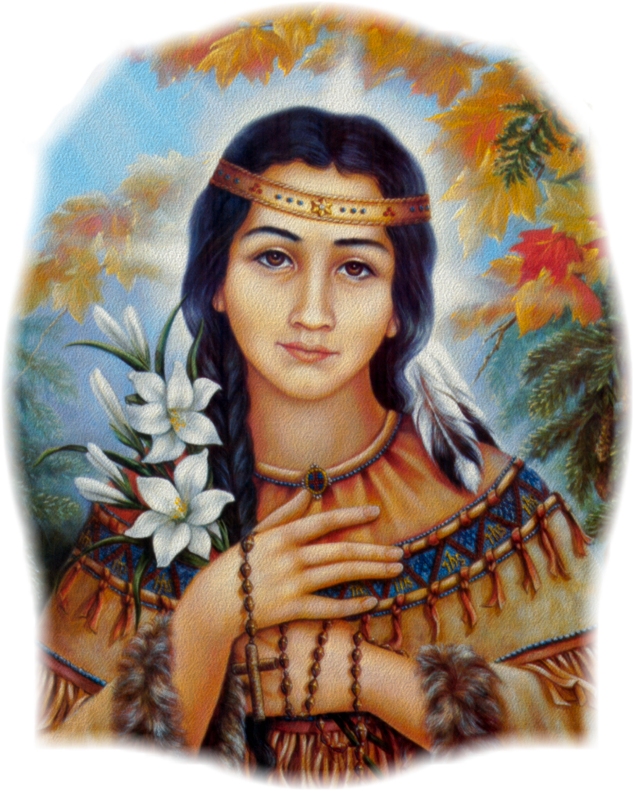St. Kateri Tekakwitha
Birth of a Saint
Born in 1656 on the very ground where the three martyrs of Auriesville shed their blood, Kateri was the daughter of a Catholic Algonquin woman who had likely been captured in Canada and brought to Ossernenon. There she married the Mohawk chief, and gave birth to Ioragode (Kateri’s birth name meaning “Sunshine”) and later to a baby boy.
Smallpox
When she was four years old, smallpox swept the village. Her parents and brother were among the casualties, and Kateri was badly scarred and nearly blinded by the disease. To reflect her poor eyesight, Ioragode was renamed Tekakwitha, meaning “she who gropes,” “who bumps into things,” or “who puts things in order.”
A Tragic Fire
A new village was settled a few miles west of Ossernenon. In the devastating raid of October 1666, French troops burned the Mohawk villages in retaliation for Iroquois raids on their trade routes. Tekakwitha was ten years old and watched the fire consume everything the tribe needed for the coming winter. The Mohawks agreed to an uneasy peace. They moved to the north bank of the Mohawk River, the current site of the National Kateri Shrine in Fonda.
Missionaries Return
A stipulation of the peace plan was the return of Jesuit missionaries to the Mohawk Valley. The first to arrive were welcomed into Tekakwitha’s longhouse, since her adoptive uncle was the chief. He was hostile to Christianity, in part because converts frequently migrated to live closer to the black robes near Montreal. This further diminished the population of the tribe that was already diminished by war and disease.
Learning of the Lord
But the humble young Tekakwitha who served them their food impressed them with her kindness and curiosity. She was attracted to the God/Man of whom they spoke. Over the next several years, she continued her many chores within the village. But she listened to their words, watched their rituals, and saw that they defended the captives being led to the stake.
She had always been repulsed by torture, so these actions soothed her, and the priests’ celibacy validated her intent to remain unmarried. She pondered these things as she spent time engrossed in beadwork in her longhouse, or in the woods communing with her unseen Beloved.
Baptism
Tekakwitha was baptized in 1676 at age 20, and given the name Catherine, which became Kateri. Her insistence on celibacy rather than marriage created animosity among her tribesman. Who would hunt for her and feed her if she would not take a husband? How would the population endure if she refused to have children?
She endured social and emotional persecution for her convictions and for her love of Jesus and the cross, until her life was threatened. She escaped to a native Christian settlement near Montreal.
Death of Kateri
She spent her remaining years in prayer, penance, harsh mortifications, and charitable works. After suffering fevers and abdominal pain, she died at age 24 on Wednesday of Holy Week 1680. The facial scarring from the smallpox disappeared upon her death. Apparitions of her were soon reported, as were answered prayers and healings through her intercession.
Becoming a Saint
Kateri was beatified in 1980, and in 2012 was canonized St. Kateri Tekakwitha as the first Native American saint from what is now the United States.

